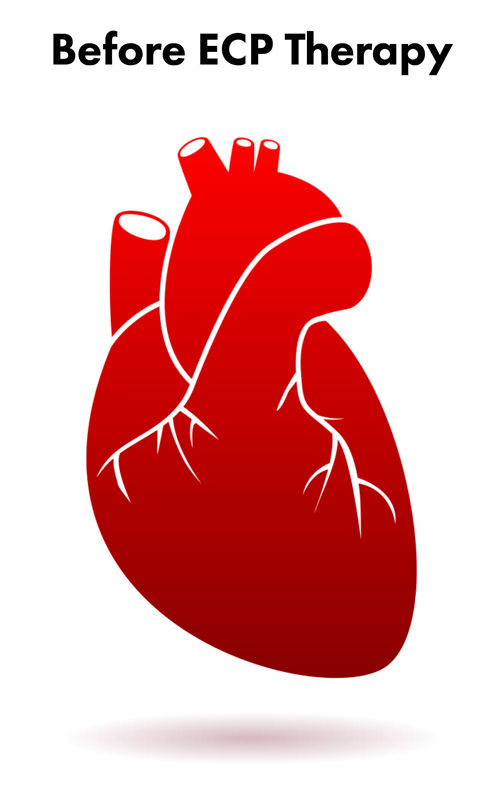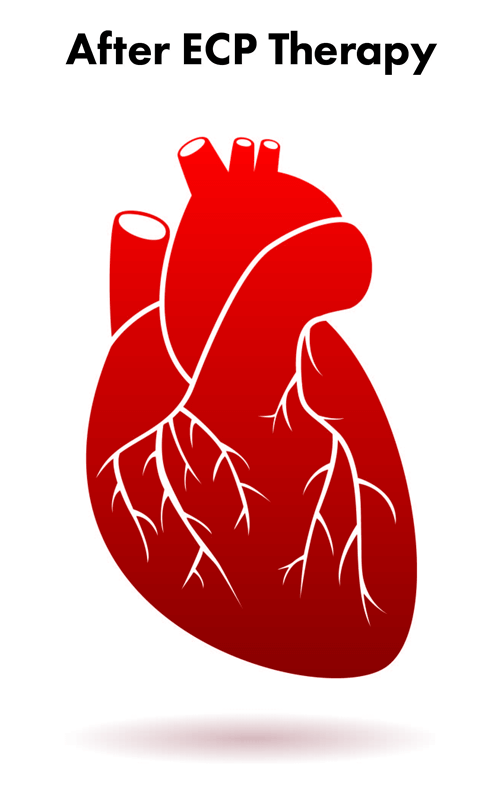About Renew™ ECP Therapy
What is Renew™ ECP Therapy?
Renew™ ECP (External Counterpulsation) Therapy is a safe, non-invasive and clinically proven process that enhances blood circulation. The therapy comprises of synchronized external pressure applied on the lower limbs during the diastole phase of the heart cycle. Renew™ NCP-5, the ECP device used in the therapy, is cleared by the U.S. Food and Drug Administration (FDA) and approved by the Singapore Health Sciences Authority (HSA) for treatment of chronic stable angina.
A few years ago, an X-ray revealed that I had heart stenosis. Considering the high risk for my age, I did not want to undergo bypass or other forms of surgery and decided to try ECP therapy instead. After completing the full course of therapy, my health has improved significantly and it shows in my ECG and blood test results!
An X-ray revealed that I had severe blockages in my arteries. After completing a full course of ECP therapy, the doctor said that I no longer needed surgery because my blockages had reduced significantly. My scans even showed new blood vessel growth. The benefit from ECP therapy is great.
I feel much more active after ECP treatment. My chest pain and body aches have now disappeared, along with the irregular heartbeats that I used to experience. My experience of this non-invasive therapy has been great.
I am very grateful to have been introduced to ECP therapy. Before starting ECP therapy, I was always feeling tired and suffered from chest pain. It occurred quite frequently, so I had difficulty going about my daily activities. After 35 sessions of ECP therapy, my chest pain was gone. I noticed a big difference in my health. I feel great!
What Are the Benefits of Renew™ ECP Therapy?
ECP and the Heart Muscle
Application of a 3-lead ECG enables the compression of the blood vessels to be timed according to one's heartbeat. During diastolic phase, pressure cuffs wrapped around the calves, thighs and hips inflate sequentially. The precise inflation during diastole enhances oxygenated blood flow through the coronary arteries to the heart muscle. Right before the next heart contraction, the cuffs deflate simultaneously, thus decreasing the cardiac workload. This cycle augments systemic and coronary perfusion pressure while reducing left ventricular afterload. Venous return and cardiac output are also increased. These effects from ECP therapy lead to improvement in ischemia symptoms.
Chronic stable angina patients who respond well to ECP therapy often experience1:
- A reduction in angina symptoms: shortness of breath, dizziness, fatigue, weakness, pain or pressure in chest, back, neck, jaw, shoulders, or arms
- A reduction in nitroglycerin use
- An increase in energy and exercise tolerance
- An overall improvement in quality of life
- Benefits that can last for years after treatment (see graph below)

The Mechanism of ECP
Due to the haemodynamic effects of ECP, its beneficial effects apply not only to the heart, but also to the entire cardiovascular system.
Overview of proposed mechanism of ECP therapy
(Bonetti et al., 2003, Braverman, 2009)
Enhanced blood circulation during ECP therapy greatly increases shear stress (the frictional force on blood vessels), thereby stimulating production of Nitric Oxide. A clinical study showed that after 35 sessions of ECP, plasma level of NOx increased by 36% while endothelin-1 (ET-1) levels decreased by 25%.3 Nitric Oxide is a powerful vasodilator and helps to stimulate angiogenesis. It also plays an important role in regulation of blood pressure, cardiac function, immune response against infection, pulmonary function, neurohormonal functioning and cancer prevention.4 Overall, vascular health is improved with reduced arterial stiffness and increased endothelial function.
ECP therapy also benefits the body’s vital organs. A clinical study showed increased blood flow in the internal carotid artery, hepatic artery and right renal artery by 19%, 25% and 21% respectively during ECP therapy.5
Overall Benefits of ECP
To date, over 200 peer-reviewed clinical studies have been performed and published to understand the benefits of ECP on some of the world’s top diseases such as cardiovascular disease, diabetes, stroke and hypertension.
Based on current studies of the ECP mechanism, benefits of ECP have included:
- Enhanced oxygenated blood flow to coronary arteries and strengthened heart muscles
- Angiogenesis around the narrowed arteries in the heart; ECP is also called a ‘natural bypass’
- Increased blood circulation throughout the body, including organs such as the brain, skin, kidneys and liver
- Reduced arterial stiffness
- Release of growth factors
- Anti-inflammation
- Stimulation of Nitric Oxide release
- Positive impact on cardiovascular fitness
- Improved sexual function for men
- Improved vasodilation, increased VO2 and increased blood flow
- Reduced lactic acid following exercise


References
- Loh PH, Cleland JGF, Louis AA, et al. Enhanced external counterpulsation in the treatment of chronic refractory angina: A long-term follow-up outcome from the international enhanced external counterpulsation patient registry. Clin Cardiol. 2008;31:159-164
- Braverman, D. Heal Your Heart with EECP: The Only Noninvasive Way to overcome Heart Disease. Crown Publishing Group. 2005: 68
- Braith RW, Conti CR, Nichols WW, et al. Enhanced external counterpulsation improves peripheral artery flow-mediated dilation in patients with chronic angina: a randomized sham-controlled study. Circulation. 2010;122:1612-20.
- Jerca L, Jerca O, Mancas G, Constantinescu I, Lupusoru R. Mechanism of action and biochemical effects of nitric oxide (NO). J Prev Med 2002; 10(2): 35-45.
- Werner, D., et al., Pneumatic external counterpulsation: a new noninvasive method to improve organ perfusion. Am J Cardiol, 1999. 84(8): p. 950-2, A7-8.

